Blog GES Unraveling Network Mysteries
Unraveling Network Mysteries: The Art of Reverse Engineering In networking, reverse engineering doesn’t mean figuring out how something was built and trying to copy it (like the German Enigma machine...
Today, we are pleased to announce Cisco ACI-NetBrain integration that is aimed to provide enhanced network operations to application-centric data centers enabled by Cisco ACI. As a scalable and versatile visibility and automation platform, NetBrain integrates with Cisco ACI to provide extensive visualization and automation for operational workflows such as monitoring, troubleshooting, and visualization of the heterogeneous network.
Cisco ACI is an industry-leading secure, open, and comprehensive Software-Defined Networking (SDN) solution. Cisco ACI’s policy-based, application-centric model radically simplifies, optimizes, and expedites application deployment and the underlying infrastructure provisioning.
Customers who are used to operating their data centers in a network-centric context often struggle to transition to the application-centric way of data center operations. Enterprises are looking for a gradual transition towards the application-centric approach.
The NetBrain solution for Cisco ACI offers an elegant approach, aiding enterprises to transition to an application-centric data center enabled by Cisco ACI. Using NetBrain’s powerful visualization, A-B path mapping, and Runbook Automation, the solution provides extensive capabilities in the form of network and application-centric views, troubleshooting and on-demand monitoring that helps users to not only seamlessly transition to ACI but also optimize day-2 data center operations.
Utilizing this joint solution, any network team supporting a network with ACI deployment can:
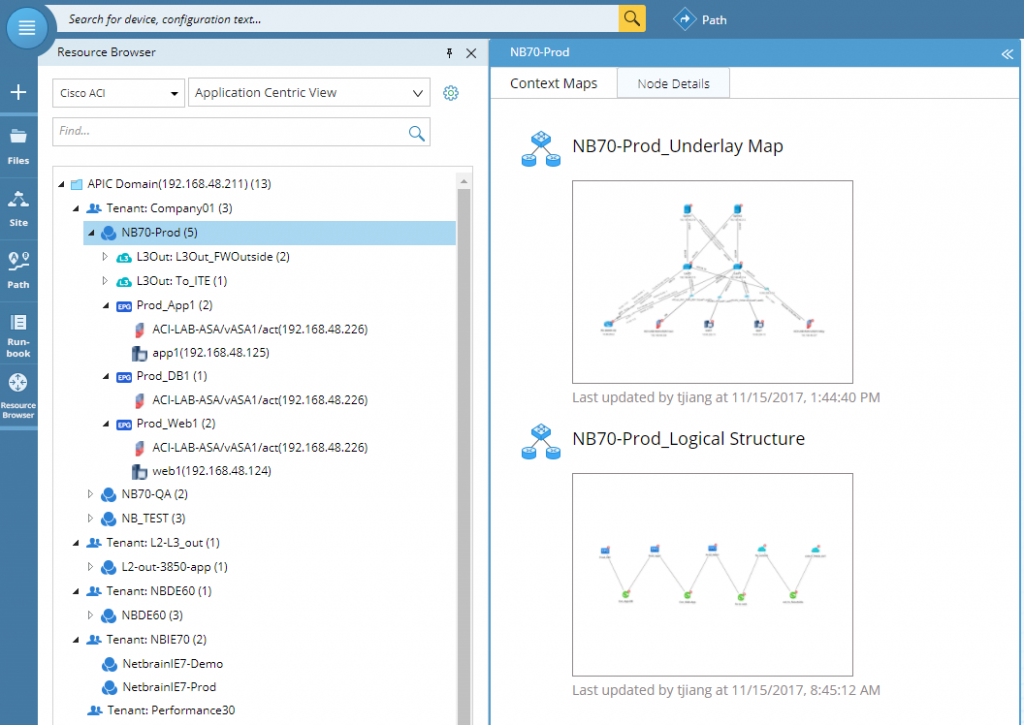 Figure 1
Figure 1
Further, using Context Maps, users can plot relationships between applications and the corresponding network infrastructure, and create dynamic and customizable Data Views to get one-click access to all relevant data points. (Figure 2)
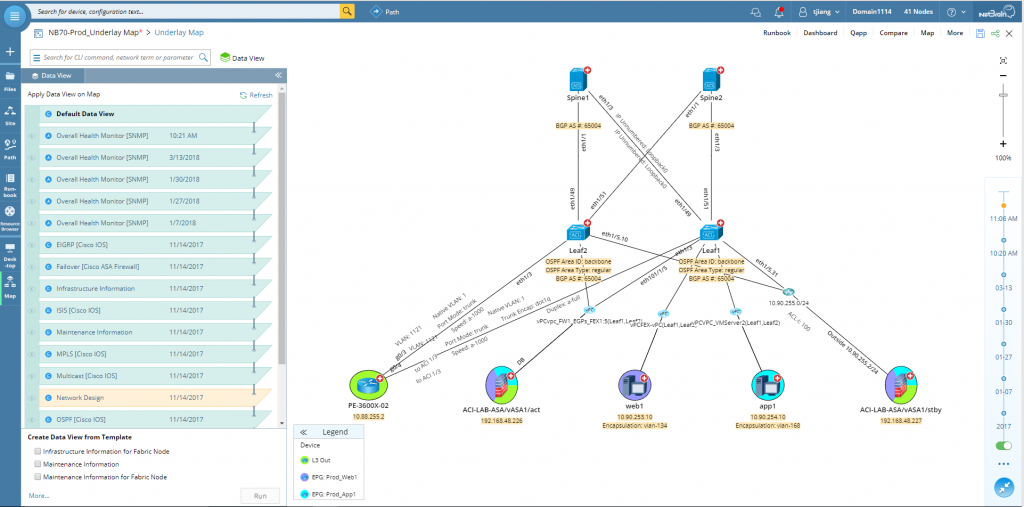 Figure 2
Figure 2
 Figure 3
Figure 3
Further, Netbrain’s A-B path tracing capability allows users to gain a hop-by-hop view of the network path traversing across traditional network and ACI fabric. (Figure 4)
 Figure 4
Figure 4
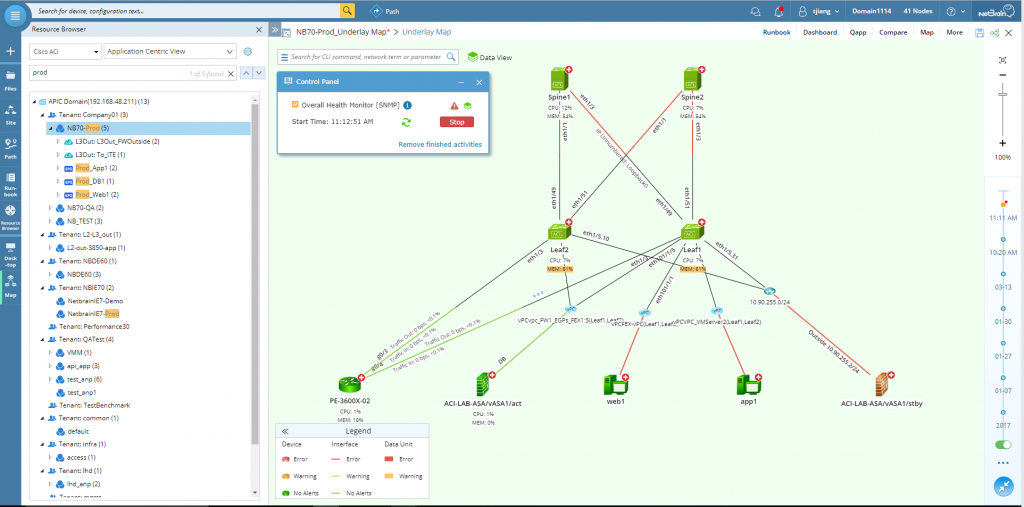 Figure 5
Figure 5
Additionally, Runbook Automation acts as a collaboration tool where design experts can create a Runbook procedure that can be reused and shared across organizations. (Figure 6)
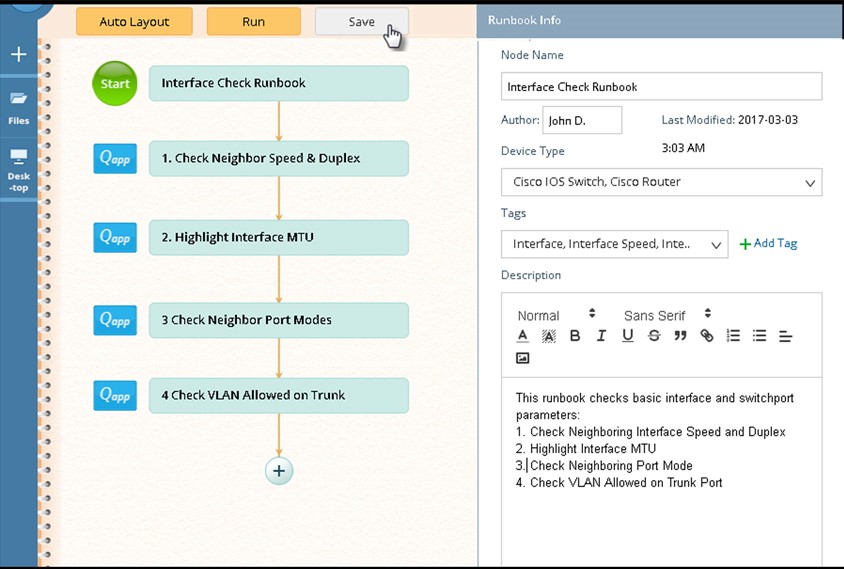 Figure 6
Figure 6
For transient problems where capturing the diagnostic information is critical along with immediate actions, the solution provides Triggered Diagnosis capability. Users can create a routine that listens to real-time notifications from APIC and, upon triggering, automatically maps the problem area, executes data collection and analysis actions, and save results in the map. (Figure 7)
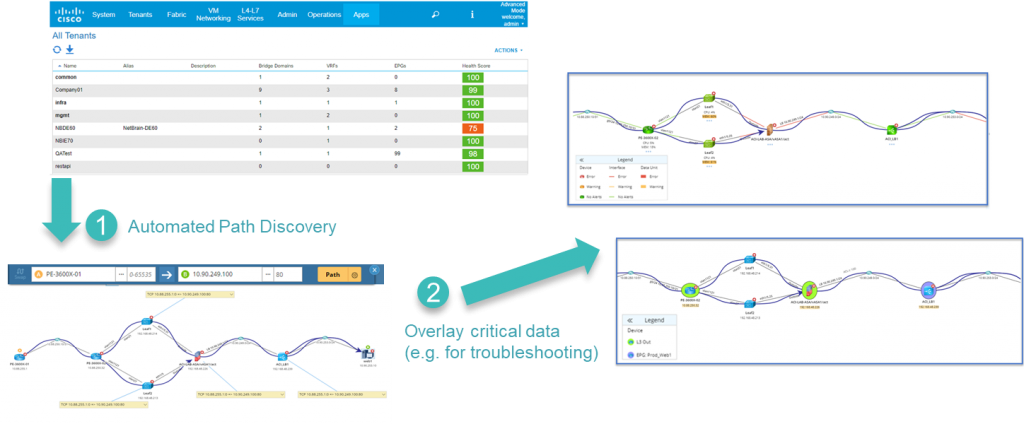 Figure 7
Figure 7